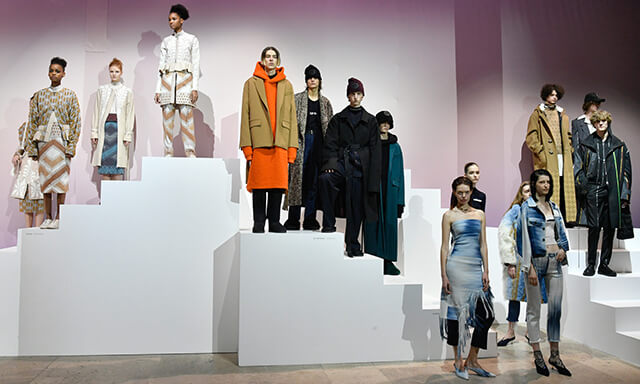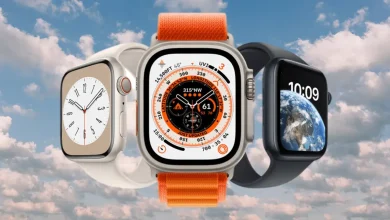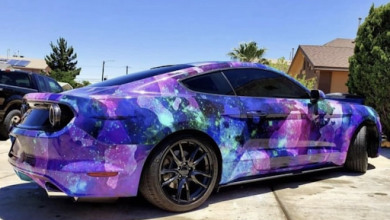The Evolution of Style: How UK Women and Men Are Redefining Fashion in the 21st Century

Fashion has always been a powerful form of self-expression, and in the United Kingdom, it has played a significant role in shaping cultural identity. From the punk rock movement of the 1970s to the minimalist trends of the 1990s, UK fashion has consistently been at the forefront of global style. In recent years, the lines between traditional gender norms in fashion have blurred, leading to a more inclusive and diverse approach to style. This article explores how UK women and men are redefining fashion in the 21st century, breaking away from conventional norms and embracing individuality, sustainability, and innovation.
1. The Historical Context of UK Fashion
To understand the current state of fashion in the UK, it’s essential to look back at its rich history. The UK has long been a hub for fashion innovation, with London serving as one of the world’s fashion capitals. The 1960s saw the rise of the mod subculture, characterized by tailored suits, mini-skirts, and bold patterns. The 1970s brought the punk movement, with its rebellious spirit and DIY ethos, led by icons like Vivienne Westwood and Malcolm McLaren.
The 1980s and 1990s saw the emergence of streetwear and the influence of music on fashion, with genres like hip-hop and grunge shaping the way people dressed. The UK has always been a melting pot of styles, and this diversity has continued into the 21st century, with a growing emphasis on individuality and self-expression.
2. The Rise of Gender-Neutral Fashion
One of the most significant shifts in UK fashion in recent years has been the rise of gender-neutral clothing. Traditionally, fashion has been divided into men’s and women’s categories, with strict rules about what each gender should wear. However, as societal attitudes towards gender have evolved, so too has fashion.
Designers and brands in the UK are increasingly creating collections that are not defined by gender. This shift is reflected in the popularity of unisex clothing, which focuses on comfort, functionality, and versatility. Brands like ASOS, Zara, and H&M have introduced gender-neutral lines, offering everything from oversized blazers to tailored trousers that can be worn by anyone, regardless of gender.
The rise of gender-neutral fashion is not just a trend; it’s a reflection of a broader cultural shift towards inclusivity and acceptance. By breaking down the barriers between men’s and women’s fashion, UK designers are challenging traditional norms and creating a more inclusive fashion landscape.
3. The Influence of Social Media on Style
Social media has had a profound impact on the way people in the UK approach fashion. Platforms like Instagram, TikTok, and Pinterest have become essential tools for discovering new trends, sharing personal style, and connecting with like-minded individuals. Influencers and content creators have emerged as key players in the fashion industry, shaping the way people dress and influencing the choices of major brands.
For UK women and men, social media has provided a platform to showcase their unique style and connect with others who share their fashion sensibilities. It has also democratized fashion, making it more accessible to people from all walks of life. Whether it’s through outfit inspiration, styling tips, or behind-the-scenes looks at fashion shows, social media has transformed the way people engage with fashion.
4. Sustainable Fashion: A Growing Movement
As awareness of environmental issues has grown, so too has the demand for sustainable fashion. In the UK, both women and men are increasingly seeking out brands that prioritize ethical practices, from sourcing materials to manufacturing processes. The rise of sustainable fashion is not just a trend; it’s a movement that reflects a broader shift towards conscious consumerism.
UK brands like Stella McCartney, Reformation, and Patagonia have been at the forefront of this movement, offering stylish and sustainable options for consumers. Additionally, the rise of second-hand and vintage shopping has become a popular way for people to reduce their environmental impact while still expressing their personal style.
The sustainable fashion movement has also led to a greater emphasis on quality over quantity. Instead of buying cheap, fast-fashion items that are quickly discarded, UK consumers are investing in timeless pieces that are made to last. This shift towards sustainability is not only better for the planet but also encourages a more thoughtful and intentional approach to fashion.
5. The Role of Celebrity Culture in Shaping Style
Celebrity culture has always played a significant role in shaping fashion trends, and this is no different in the UK. From the iconic style of Princess Diana to the modern-day influence of celebrities like Harry Styles and Dua Lipa, UK celebrities have long been trendsetters in the fashion world.
In recent years, there has been a growing trend of celebrities using their platform to challenge traditional gender norms in fashion. Harry Styles, for example, has become known for his bold and androgynous style, often wearing traditionally feminine pieces like blouses and skirts. Similarly, Dua Lipa has embraced a mix of vintage and contemporary styles, often incorporating bold colors and patterns into her looks.
The influence of celebrity culture extends beyond just clothing; it also includes beauty and grooming trends. UK celebrities like Jameela Jamil and Little Simz have been vocal advocates for natural beauty and self-acceptance, encouraging their fans to embrace their individuality and reject unrealistic beauty standards.
6. The Impact of Streetwear on UK Fashion
Streetwear has become a dominant force in UK fashion, influencing both men’s and women’s style. Originating from urban culture and influenced by music, sports, and art, streetwear is characterized by its casual, comfortable, and often oversized silhouettes. Brands like Supreme, Off-White, and Palace have gained a cult following in the UK, with their bold logos and graphic designs becoming a staple in many wardrobes.
The rise of streetwear has also led to a blending of high and low fashion, with luxury brands collaborating with streetwear labels to create exclusive collections. This fusion of styles has resulted in a more relaxed and accessible approach to fashion, where comfort and individuality are prioritized.
For UK women and men, streetwear offers a way to express their personal style while staying on-trend. It’s a style that transcends age, gender, and social status, making it a truly inclusive fashion movement.
7. The Revival of Vintage and Retro Styles
In recent years, there has been a resurgence of interest in vintage and retro fashion in the UK. From 90s-inspired slip dresses to 70s-style flared trousers, UK women and men are embracing the styles of past decades and giving them a modern twist.
The appeal of vintage fashion lies in its uniqueness and sustainability. By shopping for second-hand and vintage pieces, consumers can create one-of-a-kind looks that stand out from the crowd. Additionally, buying vintage is a more sustainable option, as it reduces the demand for new clothing and helps to combat the environmental impact of fast fashion.
The revival of vintage and retro styles has also led to a renewed appreciation for craftsmanship and quality. Many vintage pieces are made with higher-quality materials and construction than their modern counterparts, making them a worthwhile investment for those looking to build a timeless wardrobe.
8. The Importance of Accessories in UK Fashion
Accessories have always played a crucial role in completing an outfit, and in the UK, they are an essential part of both women’s and men’s style. From statement jewelry to bold handbags, accessories allow individuals to add a personal touch to their look and express their creativity.
In recent years, there has been a growing trend towards bold and unconventional accessories. UK women are embracing oversized earrings, chunky necklaces, and colorful scarves, while men are experimenting with statement watches, bold sneakers, and unique hats. Accessories have become a way to make a statement and stand out in a crowded fashion landscape.
The rise of sustainable fashion has also influenced the accessories market, with many UK consumers opting for eco-friendly options like vegan leather handbags and recycled metal jewelry. Accessories are no longer just an afterthought; they are a key component of a well-rounded and thoughtful wardrobe.
9. The Future of UK Fashion: Innovation and Technology
As we look to the future, it’s clear that technology will play an increasingly important role in shaping UK fashion. From virtual fashion shows to AI-powered styling tools, technology is transforming the way we interact with fashion and creating new opportunities for innovation.
One of the most exciting developments in UK fashion is the rise of digital fashion. Digital clothing, which exists only in the virtual world, allows consumers to experiment with new styles without the environmental impact of physical production. This trend is particularly popular among younger generations, who are more comfortable with digital technology and eager to explore new ways of expressing themselves.
Another area of innovation is the use of sustainable materials and production methods. UK brands are increasingly turning to innovative fabrics like mushroom leather, recycled polyester, and biodegradable textiles to create stylish and eco-friendly clothing. These advancements are not only better for the planet but also offer new possibilities for design and creativity.
10. Conclusion: The Power of Individuality in UK Fashion
In conclusion, the fashion landscape in the UK is undergoing a significant transformation, driven by a desire for individuality, inclusivity, and sustainability. UK women and men are breaking away from traditional gender norms and embracing a more diverse and inclusive approach to style. From the rise of gender-neutral fashion to the growing influence of social media and technology, the future of UK fashion is bright and full of possibilities.
As we move forward, it’s clear that the power of individuality will continue to shape the way we dress and express ourselves. Whether it’s through bold accessories, sustainable choices, or innovative designs, UK fashion is a reflection of the diverse and dynamic culture that defines the nation. By embracing change and challenging the status quo, UK women and men are redefining what it means to be stylish in the 21st century.
References
- British Fashion Council. (2021). “The Future of Fashion: Sustainability and Innovation.”
- McRobbie, A. (1998). “British Fashion Design: Rag Trade or Image Industry?” Routledge.
- Entwistle, J. (2000). “The Fashioned Body: Fashion, Dress and Modern Social Theory.” Polity Press.
- Breward, C. (2003). “Fashion.” Oxford University Press.
- Wilson, E. (2003). “Adorned in Dreams: Fashion and Modernity.” I.B. Tauris.


